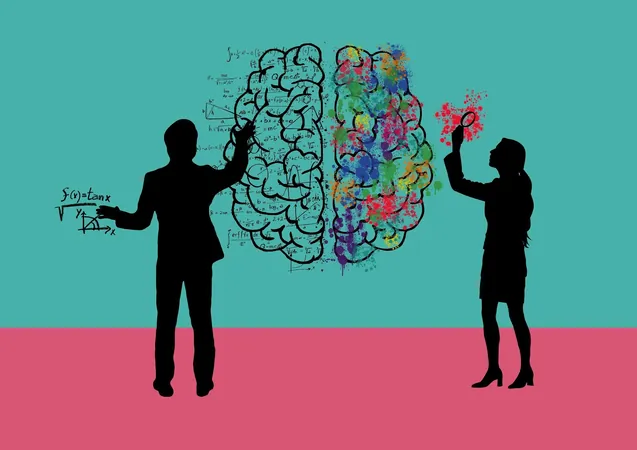
Unlocking the Secrets of Childhood: Tracking Brain Development Like Never Before!
2025-08-04
Author: Sarah
Revolutionizing Child Development Monitoring
At the average pediatric appointment, parents anxiously watch as doctors plot their child's height and weight on standard growth charts. But what if you could track something even more vital—the development of your child's brain? A groundbreaking initiative by researchers at the University of Maryland aims to make this a reality.
A New Tool for Understanding Young Minds
Led by Professor Tracy Riggins along with esteemed colleagues Professors Brenda Jones Harden and Nathan Fox, this team is collaborating with the National Institutes of Health to unveil the NIH Brain Development Cohorts (NBDC) Data Hub. For the first time ever, researchers worldwide can access extensive brain, behavioral, and genomic data thanks to ongoing projects like the Adolescent Brain Cognitive Development (ABCD) Study and the HEALthy Brain and Child Development (HBCD) study.
A Treasure Trove of Data Awaits!
Once connected to the NBDC Data Hub, scholars can explore vast and diverse topics related to children's neurological and psychological development, ranging from autism to language skills. "This is a dataset like none other. It charts the growth of the brain in ways we’ve never seen before," states Riggins. With insights spanning from pregnancy to adolescence, the studies involved form a colossal repository of information.
The Scope of Research Opportunities
The HBCD study starts from pregnancy and continues until age eight, while the ABCD follows participants from age eight into their teenage years. With around 7,000 parent-child pairs in the HBCD study alone, researchers are positioned to analyze the full spectrum of brain growth during the critical years from birth through early adolescence.
Environmental Influences on Development
One of the study's key aims is to evaluate how environmental factors—like prenatal substance exposure, pollution, and family stress—affect children's cognitive and emotional well-being. Jones Harden emphasizes the importance of considering various demographic factors, including race, location, and socioeconomic status.
An Open Resource for All
The NBDC initiative is not owned by a single entity; it’s a shared resource designed to inform policies that can enhance the lives of children and families facing challenges such as addiction or limited access to services. Riggins notes that the extensive funding behind this research is designed to improve outcomes on a broader scale, enabling researchers to address myriad questions about human development.
Collaboration is Key
Interestingly, this collaborative effort means findings from one corner of the brain can benefit research in entirely different areas. Riggins mentions that, while she studies the hippocampus, colleagues focusing on different brain regions can leverage the same data to pursue theirs.
Inviting Families to Join the Movement
To keep this ambitious project thriving, the UMD team is actively recruiting participants, including those speaking both English and Spanish. They strive to support families involved in the study with resources ranging from clothing to temporary housing during research scans.
Limitless Potential for Discovery!
As this initiative grows, so does the wealth of data available for researchers globally. Riggins concludes, "The knowledge we can gain about the human brain and behavior from this initiative is boundless—truly an exciting frontier in child development research!"


 Brasil (PT)
Brasil (PT)
 Canada (EN)
Canada (EN)
 Chile (ES)
Chile (ES)
 Česko (CS)
Česko (CS)
 대한민국 (KO)
대한민국 (KO)
 España (ES)
España (ES)
 France (FR)
France (FR)
 Hong Kong (EN)
Hong Kong (EN)
 Italia (IT)
Italia (IT)
 日本 (JA)
日本 (JA)
 Magyarország (HU)
Magyarország (HU)
 Norge (NO)
Norge (NO)
 Polska (PL)
Polska (PL)
 Schweiz (DE)
Schweiz (DE)
 Singapore (EN)
Singapore (EN)
 Sverige (SV)
Sverige (SV)
 Suomi (FI)
Suomi (FI)
 Türkiye (TR)
Türkiye (TR)
 الإمارات العربية المتحدة (AR)
الإمارات العربية المتحدة (AR)